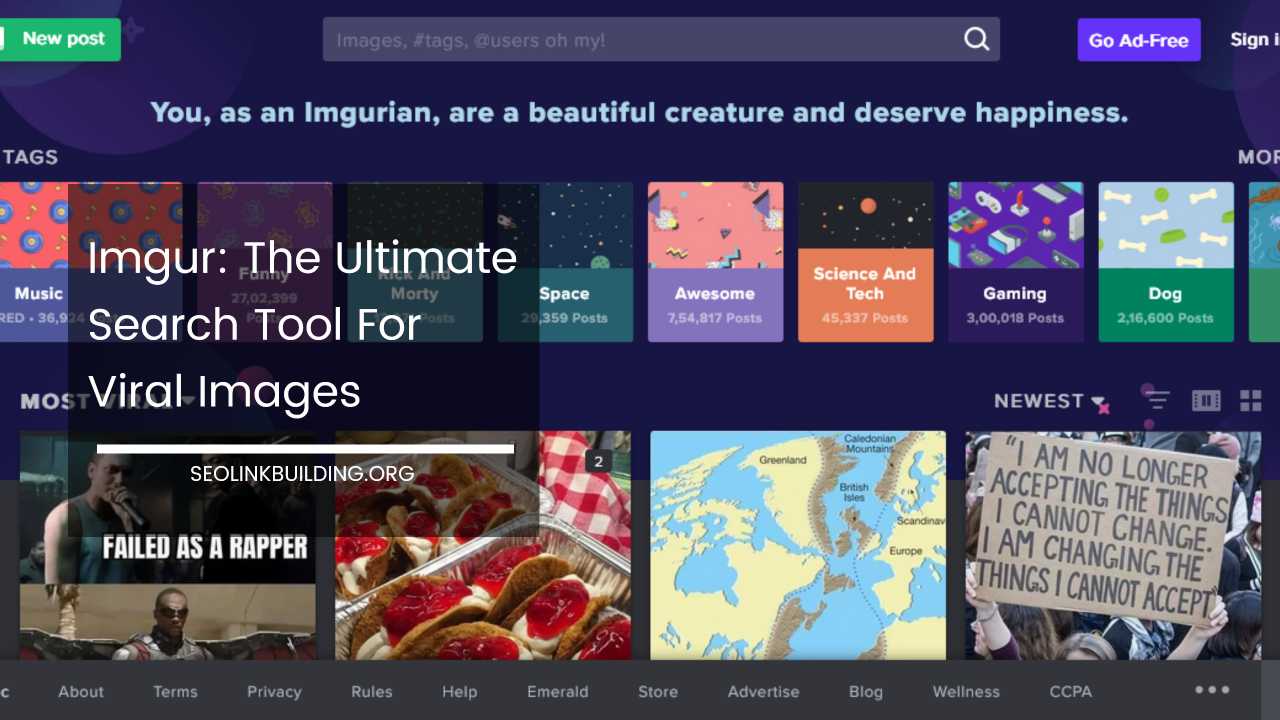7 Reader Friendly Business Blogs Tips

7 Reader-Friendly Business Blog Tips: Captivate Your Audience and Grow Your Brand
In today’s digital age, competition for attention is fierce. Businesses face an uphill battle to capture reader interest and keep them engaged with their content. This is where a well-crafted business blog emerges as a powerful tool.
A compelling and informative blog not only attracts readers but also builds trust, establishes you as an industry authority, and fosters brand loyalty.
However, simply churning out content isn’t enough. To truly resonate with your audience and achieve your content marketing goals, your blog needs to be reader-friendly.
This blog post delves into 7 key tips to ensure your business blog is captivating and easy to digest, leading to a more engaged audience and ultimately, significant brand growth.
1. Know Your Audience: Tailor Content for Reader Needs (Expanded)
The cornerstone of any successful business blog resides in understanding your target audience. Who are you writing for? What are their aspirations, challenges, and pain points? Here are some expanded strategies to truly grasp your audience’s needs:
-
Conduct Market Research: Go beyond basic surveys and polls. Utilize social media listening tools to understand the online conversations surrounding your industry and the questions your target audience is asking. Consider conducting in-depth interviews with a select group of customers to gain deeper insights into their specific needs and challenges.
-
Develop Buyer Personas: Create detailed profiles of your ideal customers, outlining not just demographics and online behavior, but also their psychographics, which delve into their values, motivations, and buying triggers. By understanding the “why” behind their actions, you can craft content that speaks directly to their aspirations and concerns.
-
Focus on Reader Benefits: Don’t just inform, transform. Frame your content around the specific benefits readers will gain by investing their time in your blog post. How will this information help them solve a problem, improve their lives, or achieve their goals? Highlight these benefits throughout your writing to keep readers engaged and eager to learn more.
2. Craft Compelling Headlines: The All-Important First Impression
Think of your blog headlines as billboards on a crowded highway. You have mere seconds to grab a reader’s attention and entice them to click. Here are some additional tips for crafting click-worthy headlines that go beyond the basics:
- Intrigue with Numbers and Statistics: Use relevant statistics or data points to pique reader curiosity and establish credibility.
- Incorporate Power Words: Sprinkle in words that evoke emotions or urgency, such as “maximize,” “unlock,” or “secrets.”
- Optimize for Search Engines (SEO): While not the sole focus, strategically incorporate relevant keywords into your headlines to improve search engine ranking and organic traffic.
3. Embrace the Power of Structure: Building a Roadmap for Readers
A well-structured blog post acts like a roadmap, guiding readers through your content and ensuring a smooth and enjoyable journey. Here’s how to create a clear and organized structure with additional elements to enhance reader engagement:
- Start with a Strong Introduction: Hook your readers with a captivating anecdote, relevant statistic, or a thought-provoking question. Consider using a “before and after” scenario to paint a picture of the reader’s current situation and the positive outcomes they can achieve through your content.
- Break Up Your Text with Subheadings and Internal Links: While subheadings are crucial, consider incorporating internal links to relevant past blog posts or informative pages on your website. This not only improves navigation but also keeps readers engaged by showcasing the depth of your knowledge and expertise.
- Leverage Bullet Points and Lists: Use bullet points and numbered lists to highlight key takeaways and make complex information easier to grasp. Consider incorporating visuals like checklists or cheat sheets within your lists for added value.
- Conclude with a Clear Call to Action (CTA): Don’t leave your readers hanging. Tell them what you want them to do after reading your post. This could be subscribing to your newsletter, downloading a free resource, attending a webinar, or contacting you for a consultation. Make the CTA clear, concise, and actionable.
4. Keep it Concise: Brevity is Beautiful (Expanded)
In our fast-paced world, people crave information quickly and efficiently. Long, dense paragraphs can overwhelm readers and cause them to lose interest. Here are some additional tips for writing concisely while maintaining depth and value:
- Focus on the Main Points: Before drafting, outline the key points you want to convey and prioritize them based on importance. This ensures your content remains focused and avoids unnecessary tangents.
- Utilize Active Voice and Strong Verbs: Active voice writing is more engaging and direct. Replace passive voice constructions with strong verbs that convey action and clarity.
- Vary Sentence Length: Don’t be afraid to mix short and long sentences to create a natural rhythm in your writing. Short sentences add emphasis and urgency, while longer sentences can provide context and elaboration.
- Edit Ruthlessly: After your initial draft, go through and ruthlessly cut out any unnecessary words or phrases. Aim for clarity and conciseness, but don’t sacrifice the flow or quality of your writing. Read your content aloud to identify areas that sound clunky or awkward.
5. Spice it Up with Visuals: A Feast for the Eyes
Visuals are not just decorative elements; they are powerful tools for enhancing reader engagement and comprehension. Here’s how to utilize them effectively beyond the basic suggestions:
- High-Quality Images: Don’t settle for stock photos that look generic or irrelevant. Invest in high-quality, unique images that complement your content and resonate with your target audience. Consider using custom illustrations or infographics for a more branded look.
- Data Visualization: When dealing with complex data or statistics, leverage data visualization tools to create charts, graphs, or infographics. These visuals can simplify complex information and make it easier for readers to understand and retain key takeaways.
- Embedded Videos: Incorporate short, engaging videos to showcase product demonstrations, customer testimonials, industry expert interviews, or explainer animations. Videos can break up text-heavy content and cater to visual learners in your audience.
6. Optimize for Readability: A Seamless User Experience
Formatting goes a long way in ensuring your blog is reader-friendly and provides a positive user experience. Here are some additional formatting points to consider:
- Choose a Readable Font: Use a clean and easy-to-read font like Arial or Helvetica. Avoid decorative fonts that can be difficult to decipher, especially on smaller screens. Opt for a font size that’s large enough for comfortable viewing on various devices, typically between 14-16px.
- Line Spacing and Paragraph Length: Leave ample space between lines (around 1.5 line spacing) and keep paragraphs concise, ideally between 3-5 sentences long. This creates a visually appealing layout and makes it easier for readers to scan and absorb information.
- Mobile-Friendly Design: Ensure your blog layout adapts seamlessly to different screen sizes for optimal viewing on desktops, tablets, and smartphones. Most website building platforms offer responsive design features to ensure a smooth user experience across all devices.
7. Promote and Share: Get Your Content Seen
Creating exceptional content is only half the battle. To truly maximize the reach and impact of your blog, you need a solid promotion strategy. Here are some tips for getting your content seen by the right audience:
- Social Media Promotion: Share your blog posts on relevant social media platforms like LinkedIn, Twitter, and Facebook. Utilize relevant hashtags to increase discoverability and target your ideal audience.
- Email Marketing: Promote your blog content to your email subscribers through engaging newsletters. Briefly summarize the key takeaways of your post and entice readers to click through for the full article.
- Content Syndication: Consider syndicating your content on relevant industry websites or publications. This can broaden your reach and expose your brand to a new audience.
- Guest Blogging: Contribute guest blog posts to other industry blogs that cater to your target audience. This is a great way to establish yourself as an authority and gain valuable backlinks to your website.
- Search Engine Optimization (SEO): Implement basic SEO best practices to improve your blog’s organic search ranking. This includes keyword research, on-page optimization, and link building. While SEO is a complex field, even basic efforts can significantly increase the visibility of your content in search engine results pages (SERPs).
By following these 7 reader-friendly business blog tips, you can transform your blog into a powerful tool for attracting and engaging your target audience.
Remember, consistency is key. Regularly publish high-quality, informative content that resonates with your readers. Over time, you’ll build trust, establish brand authority, and ultimately drive significant growth for your business.













